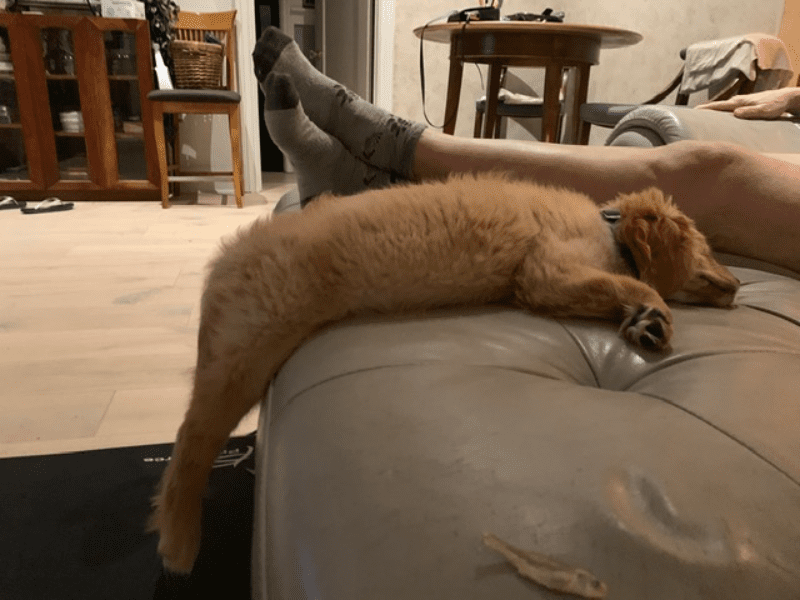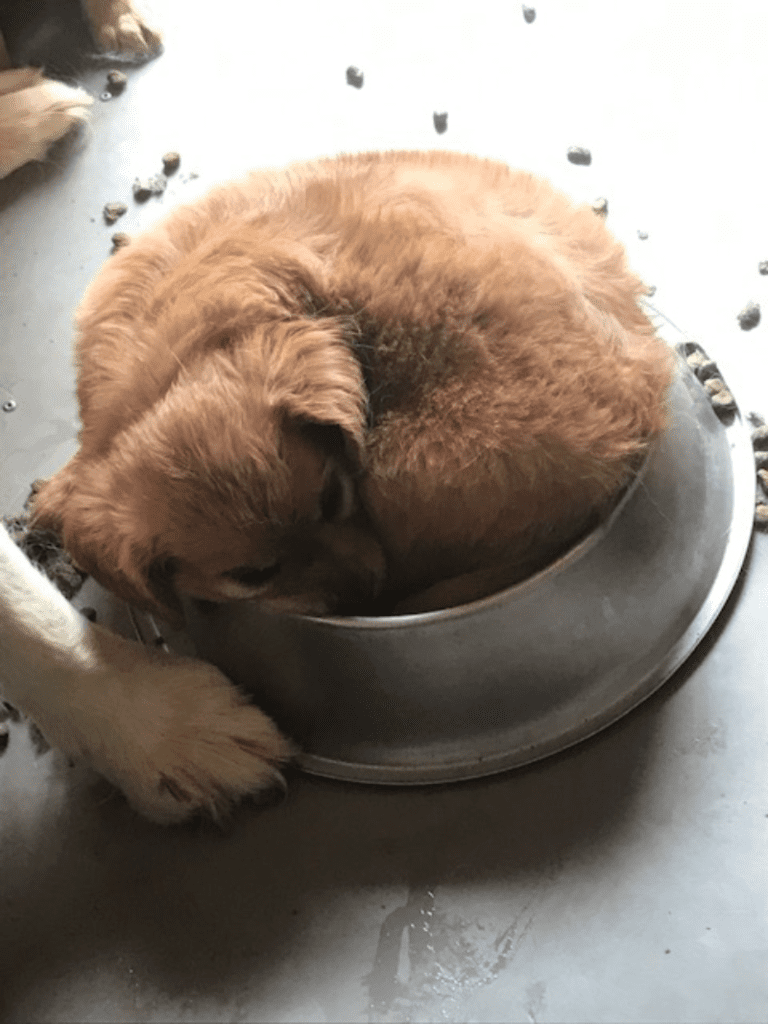Anyone who has ever owned a dog knows dogs can come up with some really crazy sleeping positions. It’s difficult to figure out if they’re actually sleeping or imitating their favorite food; a donut, pretzel or maybe a croissant! All they really want is to be cozy, but instead, they usually end up providing us with a great source of entertainment. Dogs’ bizarre sleeping habits make one more reason why we can’t get enough of our adorable four-legged friends!
What Science Says About Dog Sleeping Positions
Currently, there is almost no scientific research on dog sleeping positions and their meanings. However, biology and animal behavior can provide possible explanations for why our furry friends sleep in all kinds of interesting ways. Whether it is remnants of possible predators lurking nearby or frigidly cold nights in the woods; a connection to evolution is likely driving dogs. An inner command toward their best chance at survival.
Dog Sleeping Positions – Emotional, Physical and Mental Perceptions
- THE SIDE SLEEPER

The most common sleeping position for larger dogs. A dog will lay on its side with all four legs extended out. This position is an indication your pet feels comfortable and relaxed because the belly is partially exposed. Usually easy going affectionate dogs will choose this position. The positioning eases joint pain in older dogs. A dog in a new environment will not typically choose the side sleeper position. It takes time for a dog to build up a basic level of loyalty and trust. This position accommodates a deep sleeping dog quite well, providing ample room for dogs’ legs to roam freely.
- THE BALL SLEEPER
The most natural of all the positions. Their nose is placed to the tail while curled in a circular ball. This position is an indication a dog may be cold. Tucking into a ball conserves body heat. A behavior rooted strongly in evolution. A nest would have been made as most nights are cold in the wild. The dog would curl up, protecting vital organs from the low temps. Conveniently this allows a dog to remain on watch and alert to all nearby traffic. A dog can jump up and out of this position quite quickly to respond to a potential threat or the occasional runaway table scrap.
- THE SUPERMAN SLEEPER

The most popular position for napping dogs. They lie flat on their belly with their hind legs stretched out straight behind them. This enables them to keep a constant eye on their surroundings without leaving the snooze position. This position may be an indication your dog is feeling the heat outside. Belly contact on a cool floor can be refreshing on a hot summer’s day. Also, stretching out the hind legs or splooting gives muscles a chance to relax and feels good on the hips. Easy going energetic dogs enjoy sleeping this way.
- THE SPRAWLING SLEEPER
The most unsophisticated sleeping position. A dog lays on its back with all four legs in the air. An extremely trusting and comfortable dog will take on this position. As a dog ages this will not be the most comfortable so don’t assume your dog no longer feels safe. Dogs can expel a great amount of heat in this position through sweat glands in the paws. This allows the paws full access to air. Dogs who sprawl out feel extremely loved and cared for.
- THE BURROWING SLEEPER
The most protective sleeping position. A dog that seeks out anything it can find to sleep under. It finds security and comfort under pillows, clothes or blankets. These dogs are feeling evolutionary instincts of pack sleeping. A time when dogs would share a den and cuddle up against one another. Sleeping underneath items provides a warm and safe sleeping environment. Dogs choosing this sleeping position may be seeking more affection during their waking hours.
It’s Been Said, “Let Sleeping Dogs Lie”.

There is something so soothing about seeing your animated energetic dog find quiet rest in peaceful sleep. The funny lazy dog passed out between the sofa cushions, hanging off the edge of a chair and snoring away. All of which include their legs suspended in midair.
Lots of sleep is normal and essential. Puppies sleep approximately 18 to 20 hours per day. Adult dogs sleep anywhere between 8 to 13.5 hours per day. Strong evidence suggests dogs even dream while sleeping. In fact, their sleep patterns and brain wave activity seem to be very similar to ours. I suspect their dreams include many more squirrels than ours do.
If you absolutely must wake your sleeping dog, make the process as gentle as possible. Rattling the treat bag is bound to bring on a positive reaction. Gentle petting while whispering their name or kissy sounds will stir an affectionate response. Dog’s have a startle response that is always ready to be unleashed. It’s a survival instinct that can be aggressive if they feel threatened or startled when awakened.
Each dog will take their time perfecting its own ideal furry formation. A method is specifically unique to each dog. Providing a comfortable, warm and safe environment will ensure a proper night’s sleep. No matter how bizarre your dog chooses to lay their head, rest is required to rebuild, refuel and revive their daily cuteness levels. A measure of respect that must never be fur gotten.
Post by guest contributor – Sarah Ilhrig

Thank you, very helpful and educational!